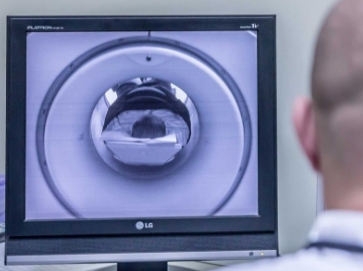
From my point of view that question is like asking “which coat is best for winter?” Can anyone say which coat is best without knowing where the person is located? Someone living in Orlando will have a different need for a coat rather than someone in Chicago. If you have ever been to RSNA, you know there is a huge difference in the weather between Florida and Illinois, especially in the wintertime.
What factors will need to be discussed for you to answer to the question correctly. “Which PACS is better”?
In my own opinion, the items here are the major points that need to be at the forefront of the final decision:
• Price (Software, Storage, VNA, Service, Training)
• Features (Support for all modalities, MIP/MPR/VR, AI, Lesion Tracking, Cardiology, 3D Recons, are upgrades included, and so much more)
• Usability (ease of use for all user roles. Radiologist, Technologist, Referring Physicians, Nursing staff, Surgeons and many others )
Price is straightforward. The product software is a specific price, and add-ons often inflate the price. The larger the company, the more the product will cost due to overhead. As well as many other price related factors. The best idea is to find the most features for the price. If you do not use all of the included features today, that does not mean you will not use them tomorrow.
Features are the options that come with the system that the user may need and use today, or at a later time, as the user’s needs expand. There are different needs for a site that only performs x-ray exams versus a site that does CT and/or MR. Maybe MIP / MPR is something needed for the site with the CT and MR, whereas the x-ray site really would not need these features today. Having preconfigured hanging protocols based on the user’s role is a feature that seems overlooked all too often. The inclusion of MG hanging protocols with and without Tomo images would be great, but only if your site is generating these image types. Are all of the latest updates included in the price? How often are product upgrades made available? Do not think of features as just things you use daily, but things that will keep you working for years to come so your software does not become obsolete. Select a company that will grow as your practice grows, not a company that tries to keep up with your growth.
Usability is somewhat subjective, but generally, how a specific user’s role is able to navigate the product should be a huge consideration. When there is only one-way to accomplish a task, this limits the user to the product’s workflow, and not the user’s workflow. Some users are mouse driven or multi-function mouse driven; some users are right click context menu driven, and some users are keyboard shortcut driven. The system that takes these design elements and allows redundant functions based on the user’s preference would be the best useable system for all users. Not every customer wants to use every feature that is offered, but differing roles should dictate the features for these users. For example, a web viewing application would be great for a referring physician; however, a technologist would not generally use this feature within the site’s network. A three or four monitor layout may be the standard for a radiologist, but makes no sense for a nursing station. With all of this said, the usability should take into account every user, and be flexible enough to adjust for non-common users’ needs.
Jay Cumbie JAN 2021
